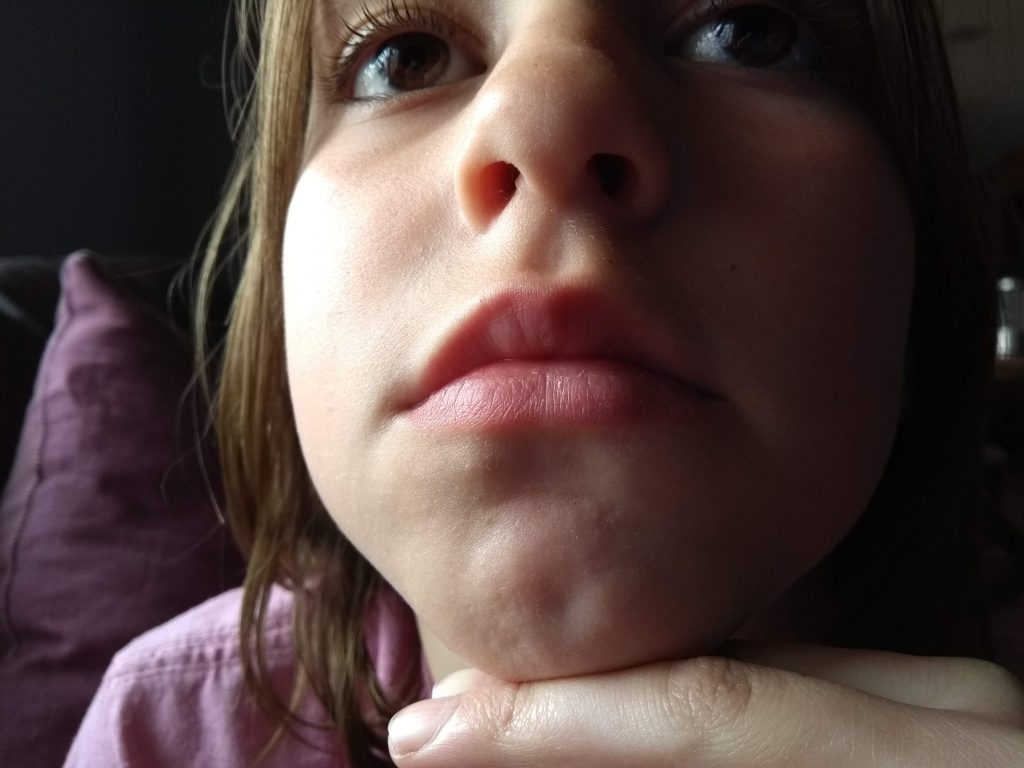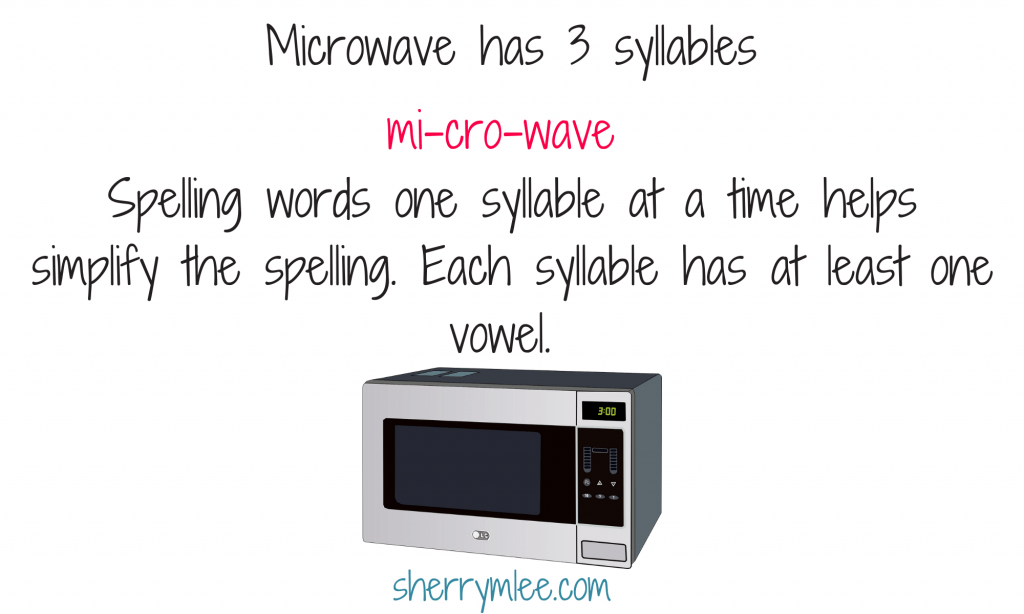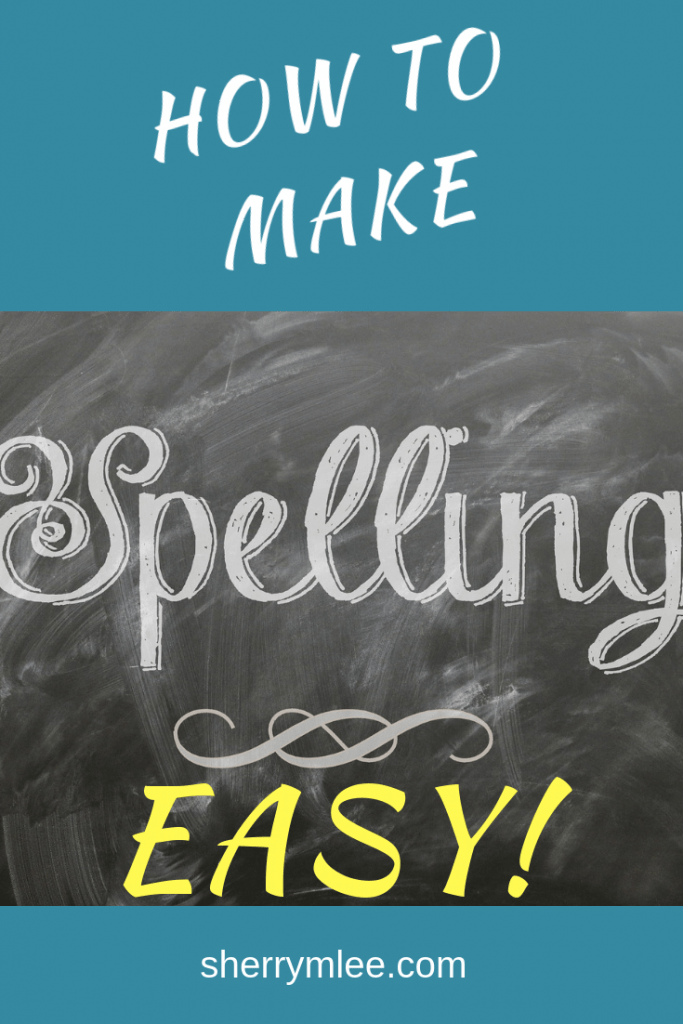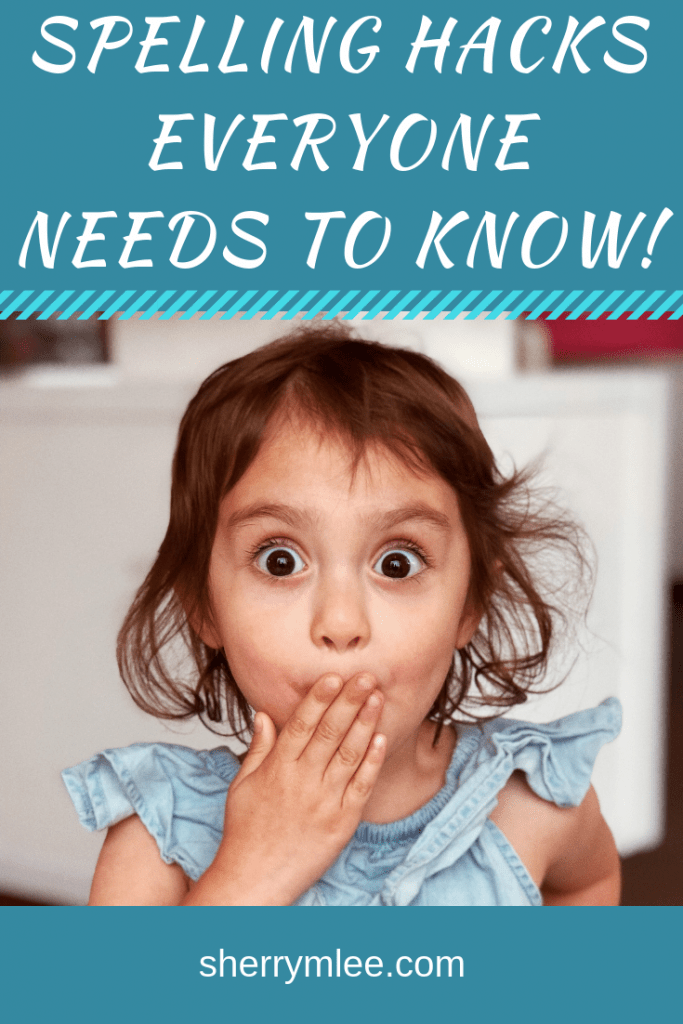We all know at least one person who struggles with spelling. Perhaps you struggle with spelling yourself! After all, there are so many rules around spelling. To add to this, for every rule, it seems there can be just as many exceptions to the rule. With 44 phonemes (sounds) in the English language and more than 200 ways to spell them, spelling is not an easy task! Add terms like blends, digraphs, and trigraphs, and the individuals that become confused with spelling really become confused! I share what I believe are the best spelling hacks ever in this post.
*Disclaimer: This post contains affiliate links, meaning I make a small commission on purchases made at no extra cost to you. Thank you for your support!

My Favorite Spelling Hack of All
My favorite spelling hack involves counting syllables first. To do this, I find it easiest to place two fingers under the chin when saying a word that we wish to spell. It is helpful to say the word slowly but normally. I add normally because slowly can sometimes become confused with really drawing a word and its sounds out and adding extra syllables to it. Syllables are the “beats” in a word. For every beat, we should be able to feel our chin flap.

Remember how our grade one teachers told us that every word needs to have at least one vowel in it? We are now expanding upon this knowledge! Not only does every word need a vowel, but every syllable needs at least one vowel. In fact, a syllable can consist of just one vowel on its own. However, it cannot consist of only consonants (unless it is the words ‘rhythm’ or ‘schism,’ but I’m thinking most individuals only use one of these two words anyway and they have to know there are ALWAYS exceptions to a rule!) 😉
Not including vowels in every syllable is a common mistake that results in spelling being unrecognizable on paper and/or when using technology. A spell checker will often not recognize words that don’t have vowels within syllables. The vowels are a, e, i, o, u, and sometimes y. The y is especially in play when at the end of words. In single syllable words like try and cry, it makes the long i sound. In words with 2 or more syllables, y tends to make the long e sound when at the end of words.
Testing it Out!
Let’s try this syllable spelling hack with a couple of longer words. Let’s take the word ‘microwave’ for example. How many syllables does microwave have? Putting two fingers under our chin, we can feel 3 chin flaps. This tells us that there are 3 syllables in the word microwave. Let’s look at spelling the syllables now.
The first syllable is mi (pronounced mī). The second syllable is cro (pronounced krō) and the third syllable is wave (pronounced wāv). With the exception of the two-letter word my, the sound mī at the beginning of two or more syllable words generally is spelled as ‘mi’. To spell ‘wave’ correctly, individuals need to be aware of the vowel-consonant-vowel rule in which the ‘e’ can jump over the single consonant and make the vowel say its name. Even without this knowledge, however, the spelling should be close enough that it will be picked up and corrected with today’s technology. What I’m saying is that microwave could be spelled as ‘mykrowav’ and a spell checker will pick up that the intended word is ‘microwave.’

Another Example
Speaking of technology, let’s try spelling out that word using the syllable hack! How many syllables does technology have? Using our two fingers under the chin, we know that technology has four syllables. This means it must have at least four vowels.
The first syllable is tech (pronounced
Technology can be a difficult word to spell, but spelling it as above will at least make it recognizable to spell-checkers such as the one found under Tools in Google Docs.

Other Important Rules
Other rules to be aware of include common spellings for the end of words. For example, the long e sound is usually made with the letter y at the end of the word when the word is 2 or more syllables. Think of words like happy, puppy, or easy.
Another rule to note is when a single c or g is followed by an e, i, or y they almost always soften. The following words can be used as examples: spice, spicing, spicy edge, edging, edgy
Exceptions to this include a bogey in golf and boogie in dance.
Don’t forget about prefixes and suffixes
It is also important to teach common prefixes and suffixes. For the purposes of this post, I am going to focus on suffixes since that is what I tend to start with.
I prefer to start with the suffixes ‘ed’, ‘ing’, ‘s’, and ‘er.’ When teaching these, teach that these suffixes have meaning as follows:
Suffix ‘ed’
The suffix ‘ed’ means past tense. Whatever is being talked about has already happened. Walk becomes walked, turn becomes turned, dread becomes dreaded, trot becomes trotted, etc. I mention these because ‘ed’ rarely adds an extra syllable, but it will if following the letters ‘d’ or ‘t’.
Suffix ‘ing’
The suffix ‘ing’ means it is happening now. Walk becomes walking, turn becomes turning, dread becomes dreading, and trot becomes trotting. Notice that an extra ‘t’ is needed with trot. This is so that the e or i stops the o from saying its name.
Suffix ‘s’
The suffix ‘s’ means more than one. Horse becomes horses, tree becomes trees, dog becomes dogs, and so on.
Suffix ‘er’
The suffix ‘er’ is sometimes just in words, such as the word ‘daughter’. However, it often means the person or thing that does something. For example, someone who teaches is a teacher, someone who builds is a builder, a machine that prints is a printer.
Spelling becomes easier once individuals recognize that suffixes have meaning and that they tend to be spelled in specific ways. Not only that, reading becomes easier as well! Individuals begin to recognize similarities between parts of words when breaking words down to either spell or read them.
Summary
Spelling can be a daunting task considering the number of ways that sounds can be spelled. However, using spelling hacks such as counting syllables and ensuring each syllable has a vowel can help! Expanding on this by teaching common suffixes and prefixes and the fact that each of these has meaning is also beneficial.
Looking for tricks on knowing how to spell homophones correctly? (eg. here or hear; to, two, or too) Be sure to check out this post.
If you have tried everything and you are simply in need of alternative ways to get thoughts down, please check out this post on creating speech to text files. If you are looking for a good spelling reference book for your children, you may wish to try the Scholastic Dictionary of Spelling.

How About You?
Do you have favorite spelling hacks that you learned that have helped you? Is there a specific rule that has helped you that you know would also help others? Let me know in the comments below! 🙂




36 Comments
These are great tips! I love the syllable trick with the chin! My daughter leaves out vowels, what a great idea to try! Wonderful tips here! Thank you!
Thank you, Lauren! I hope the syllable tip helps your daughter with including those vowels. 🙂
Hmmm, these are interesting! My kids are just in early elementary so I’m just starting with spelling tests. It’s crazy how much you forget and take for granted, then are forced to re-learn when your kids go through it!
I completely agree! I learn a lot from my kids as they work through their school tasks, too! 🙂
Thanks for those ideas. I will have to use some of them when my boys are old enough
Awesome! Thank you for checking them out, Katja! 🙂
These are awesome tips, never heard of most of them! Pinning for later when my daughter is older! Thanks for sharing!
Thank you so much, Ariana! I appreciate your support and hope these tips help when your daughter needs them. 🙂
Thank you so much for these awesome tips. I think a lot of us struggle with spelling. Sharing this to my family and friends.
So glad you find them helpful, Anna! Thank you for sharing these tips with others! 🙂
This is so interesting! I have never heard of the two fingers under the chin method. Thank you for the tips!
Thank you for checking them out, Trish! 🙂
Awesome tips, there are some I never heard of! Thank you for posting it!
Thank you! I appreciate your support, Irina! 🙂
Great tips. I have twins in Kindergarten and this will so useful to practice at home.
Excellent! So glad you will put these tips to use, Anu! 🙂
Wow this was great! We were told to clap it out to find syllables, but using your chin technique is so much better. It shows the natural syllable. Loved this and I’ll definitely be using it when my kiddos are ready to learn about syllables.
Yes, I was taught the clapping method as well as the two fingers to the voice box. However, I find it so much easier to feel for the chin flaps and have had much more success in using that method in my teaching as well. 🙂
These are amazing tips! I have a kindergartner learning to spell right now! Thank you SO much
Awesome!I’m glad they are useful to you! 🙂
These are great tips! I am a horrible speller so I’m dreading the day my little one has to start learning (I’ll probably make it worse), but I can definitely see the value in in these hacks! Thanks!
The fact that you are willing to help your little one learn spelling is sure to help both of you. You’ll do great! 🙂
These are great tips! I will for sure use them especially with the my 4, 5, and 6th graders!
This is a great age group to use them with! 🙂
I’m the world’s worst speller but it’s such a good thing to know how to do! Haha even with all the auto-correct in the world
There is so much involved with spelling as there are so many exceptions to rules. I hope this helps at least have your spelling picked up by auto-correct, Sarag! 🙂
Love these hacks! So helpful!!!
Thank you, Ann! I’m glad they are helpful for you!:)
They must be teaching the syllable trick in my daughters class because I’ve been wondering why she did that!
That’s awesome! It definitely helps! 🙂
Great tips!
😀
Thanks, this is very informative.
I’m glad this information is helpful to you. 🙂
Such smart tips! Thanks for sharing ♥️ ♥️ Let me know if you are interested in doing collabs! xx
Thank you, Tiffany! I appreciate this. 🙂